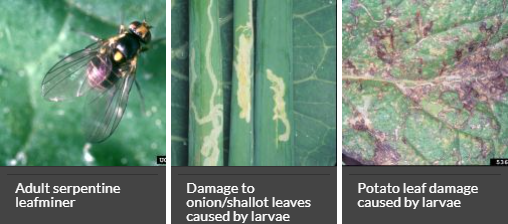Serpentine Leafminer has been detected for the first time in Queensland
Serpentine leafminer (Liriomyza huidobrensis) has been detected for the first time in Queensland following a confirmed report of the pest in Western Sydney in November 2020.
Serpentine leafminer (Liriomyza huidobrensis) is a small fly whose larvae feed internally on plant tissue, particularly the leaf, causing distinctive mine damage.
It poses a significant threat to Australia’s agriculture and nursery industry as it is a highly polyphagous species affecting a wide host range of common horticultural crops and ornamental plant species.
Infestation of plants would most likely be detected through the presence of mines in the surface of leaf tissue. Leaf mines usually appear white or pale green with black and dried brown areas. Leaf mines are typically serpentine or irregular in shape and increase in size as the larvae mature.
Report Queensland sightings
Producers and agriculture consultants are strongly encouraged to photograph and report suspect sightings of serpentine leafminer by calling 13 25 23 or emailing info@daf.qld.gov.au. Information on the current extent of the outbreak may assist growers to prepare for its arrival.
Management and control
Growers should have on-farm biosecurity measures to protect their crops from pests and diseases. More information is available at farmbiosecurity.com.au or biosecurity.qld.gov.au.
Left: Adult Serpentine Leafminer – Central Science Laboratory, Harpenden, British Crown, bugwood.org
Centre: Damage to plant stalks caused by larvae – Merle Shepard, Gerald R.Carner, and P.A.C Ooi, Insects and their Natural Enemies Associated with Vegetables and Soybean in Southeast Asia, Bugwood.org
Right: Potato leaf damage caused by larvae – Merle Shepard, Gerald R.Carner, and P.A.C Ooi, Insects and their natural enemies associated with vegetables and soybean in Southeast Asia, bugwood.org




